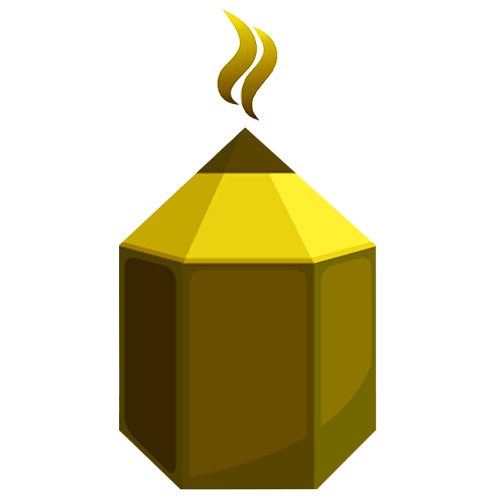فهرست پروژه ها
پیاده سازی نمودار جریان حالت در نرم افزار ونسیم
برنامه نویسی با زبانهای مختلف ، طراحی سایت و نرم افزار
موضوع پروژه مربوط به درس تئوری سیستم ها مقطع دکتری هست و نیاز هست نمودار صفحه 42 پیاده سازی شود در نرم افزار ونسیم
1 پیشنهاد 1,200,000 تومان 11 ماه پیش
مهارت ها
رفع چهار ایراد از فروشگاه
برنامه نویسی با زبانهای مختلف ، طراحی سایت و نرم افزار
یه سایتی دارم آدرس digitaldoni.ir اگه کلی بخام بگم میخوام روی سی پنل کار بشه و کلا مشکلات زیر حل بشه: زبان برنامه نویسی:php و فریمورک کداینایگتر برنامه نویسی شده(برای اطلاعات بیشتر در گوگل سرچ کنید) در صورت توافق و استخدام فریلنسر اطلاعات ورود در میز کار کارفرما و فریلنسر ارسال میشود توجه داشته باشید:شما بایدابتدا از طریق سیپنل ارسال ایمیل را فعال کنید که مشکل اول می باشد مشکل اول:عدم ارسال لینک تغییر رمز عبور برای کاربران مشکل دوم:عدم ثبت اطلاعات فرم و کارت های اعتباری(بانکی) و شخصی(برای مثال کارت ملی و شناسنامه)برای تایید مدیر به منظور ثبت هویت و تطابق کارت بانکی و کارت ملی کار سوم:ایجادگزینه حذف دستی کاربران در پنل مدیریت کاربران(ادمین سایت) کار چهارم:انتقال کامل سایت از هاست میهن وب هاست به هاست جدید(Cpanel.ir)
2 پیشنهاد 1,000,000 تومان 11 ماه پیش
مهارت ها
مشکل سئو یکباره سایت وردپرسی و افت یکباره ایندکس و سرچ کنسول
فروش ، بازاریابی ، سئو و دیجیتال مارکتینگ
این وبسایت ما تازه تاسیس هست و فکر میکنم از ماه اگوست اینا ساخته شده تا الان. و تقریبا از اکتبر ماه اینا آمار سرچ کنسول اون به خوبی رشد کرد و تا اواسط دسامبر ادامه داشت و روند سعودی بود. یکباره و یک روزه این آمار سقوط کرد و دیگه هیچ وقت درست نشد. تصویر سرچ کنسول رو میگذارم بررسی کنید. لازم به ذکر هست که تولید محتوای این وبسایت به صورت روزانه و اختصاصی در حال انجام بوده و هست. به صورت ثابت و یونیک. دیزاین و سرعت اون هم اوکی بود. و از نظر خودم هیچ مشکل سئویی نداشته است. نمیدونم چطور این اتفاق افتاده است. لطفا پیشنهادات و راه حل این مشکلی که به زهنتون میرسه رو ارسال کنید که ببینم کدوم میتونه کارساز باشه تا ایشالا پروژه رو واگذاری و این مشکل برطرف بشه. اگر نیاز به چک کردن سایت دارید پیام بدید لینک خدمتتون ارسال بشه تا بهتر بررسی کنید.
4 پیشنهاد 700,000 تومان 11 ماه پیش
مهارت ها
مینی تب یا دیزاین اکسپرت
کمک آموزشی
دادههای آماری و نمودارهای یک مقاله است که باید با مینی تب یا دیزاین اکسپرت صحت سنجی بشی و دوباره به خود مقاله انجام داده من باید همون رو خودم اجرا کنم نتیجه رو بگم بیاد لپ تاپ خودم دو هفته است خرابه الا خودم انجام میدادم کار زیادی نداره من زمان ندارم هزینه تا حد قابل مذاکره است خود مقاله ۱۰ صفحه بیشتر نیست روش rsm , ccd هستش
2 پیشنهاد 300,000 تومان 11 ماه پیش
مهارت ها
طراحی بنر و کارت ویزیت
تایپ و ترجمه
انجام طراحی انواع بنر و کارت ویزیت
3 پیشنهاد 2,000,000 تومان 11 ماه پیش
مهارت ها
دریافتapi
تلفن همراه و دستگاه های هوشمند
میخوام api فیس بوک تهیه بشه برای ارائه خدمات دایرکت و کامنت خودکار
1 پیشنهاد 2,000,000 تومان 11 ماه پیش
مهارت ها
برنامه نویسی اندروید
تلفن همراه و دستگاه های هوشمند
برنامه نویسی اپلیکیشن مدیریت گلخانه که امکان ارسال و دریافت دیتا با بلوتوث و وای فا به سخت افزار جانبی را داشته باشی این برنامه قبلا با plc نوشته شده است و تعداد صفحات،الگوریتم و نوع کار مشخص می باشد ضمنا نوع پروتکل ،دستور ،و نحوه ارتباط مشخص میباشد و در اختیار برنامه نویس گذاشته می شود
3 پیشنهاد 30,000,000 تومان 11 ماه پیش
مهارت ها
ارائه رساله دکتری
تولید محتوا ، نویسندگی و نگارش مقاله
ساخت فایل ارائه از رساله دکتری با نرم افزار focusky
2 پیشنهاد 2,000,000 تومان 11 ماه پیش
مهارت ها
حل مساله lid driven cavity با python
برنامه نویسی با زبانهای مختلف ، طراحی سایت و نرم افزار
پروژه درس دینامیک سیالات محاسباتی هست با موضوع حل معادلات بقا و مومنتوم (ناویر استوکس) و نمایش کانتور های سرعت و فشار و خطوط جریان برای مساله حفره با یک درب(دیواره) متحرک (لغزان). مشابه این مساله به وفور در اینترنت و سایت های ارائه دهنده کد موجود هست و هوش مصنوعی هم می تونه کد ارائه بده، اما مساله جزئیات کد و روش حل خواسته شده هست که باید خواسته مساله رو براورده کنه.و درنهایت به جواب های منطقی برسه. خواسته مساله و جزئیات در فایل با نام 1 و 2 ضمیمه می باشد در نهایت با نتایج مقاله پیوست شده مقایسه شود. تسلط به پایتون ، فیزیک و فرمول های مساله و همچنین روش حل SIMPLE (staggered) برای این مساله کافی است. +کتاب ورستیگ هم برای درک تفاوت روش staggered و co-located ضمیمه می باشد. +مساله در دو صفحه با نام های 1 و 2 ضمیمه می باشد.
2 پیشنهاد 1,300,000 تومان 11 ماه پیش
مهارت ها
اندازه گیری جریان ac در کدویژن avr
برنامه نویسی با زبانهای مختلف ، طراحی سایت و نرم افزار
با سلام.من جریان بین 0 تا 5 آمپر متناوب دارم که میخام با avr و در کدویژن خوانده شود و مقدار آن داخل یک متغییر ریخته شود.کد رو لازم دارم تا داخل پروژه خودم که با میکروکنترلر mega128 انجام دادم بزارم.قطعات و شماتیک مدار خارجی هم درنظرگرفته شود.برای اندازه گیری جریان حتما از CT مثل zmct103 استفاده شود.
3 پیشنهاد 2,000,000 تومان 11 ماه پیش
مهارت ها
سایت استعلام چک صیادی
برنامه نویسی با زبانهای مختلف ، طراحی سایت و نرم افزار
سایت مختص استعلام های مربوط به چک صیادی از قبیل وضعیت اعتباری چک زنجیره انتقال چک مبلغ چک های سو اثر شده صاحب چک مبلغ چک های برگشتی صاحب چک مبلغ چک های در راه صاحب چک با قابلیت های تاریخچه استعلام و اشتراک گذاری متنی و عکس و دریافت ورودی از اکسل و ... استعلام گروهی و ...
2 پیشنهاد 15,000,000 تومان 11 ماه پیش
مهارت ها
پروژه خصوصی
تولید محتوا ، نویسندگی و نگارش مقاله
1 پیشنهاد 15,000,000 تومان 11 ماه پیش
مهارت ها
مقاله نویسی آی اس آی در حوزه های حمل و نقل و انرژی
تولید محتوا ، نویسندگی و نگارش مقاله
نیازمند همکار دانشجو قابلیت نگارش مقالات علمی در ژورنال های معتبر آشنا به مقاله نویسی با رفرنس تایید شده و شرایط مناسب همکاری هستم. این یک مقاله نیست همکاری در صورت کیفیت کار طولانی مدت هست. ایده مقالات و برخی از نوشتار مقاله های جاری انجام شده و برای تکمیل همکار نیاز هست و ایده هایی که در مرحله جمع آوری دیتا هستند هم قابل انجام هست. 1- به عنوان همکار اسم شما و در صورت لزوم یک نفر دیگر از طرف شما در مقالات درج خواهد شد. 2- باید قابلیت امضای الکترونیکی تفاهم نامه حفظ محرمانگی را داشته باشید. ۳- مسلط به روش تحقیق و دارای حداقل یک مقاله معتبر با نام خودتان باشید. ۴- هزینه های سابمیت و سایر همانگی ها با ژورنال و یا کنفرانس ها با اینجانب خواهد بود. با تشکر لطفا حتما با نمونه کار اپلای کنید تا در نظر گرفته شوید. ابتدای اپلای خود را با جمله من تمام شرایط نوشته شده در توضیحات را مطلعه کردم و قبول دارم در کوتیشن شروع فرمایید.
3 پیشنهاد 10,000,000 تومان 11 ماه پیش
مهارت ها
پروپوزال ارشد
تولید محتوا ، نویسندگی و نگارش مقاله
پروپوزال ارشد در رشته اقتصاد با موضوع : بررسی تطبیقی مقایسه ای تقاضای فناوری نوین سلامت در کشور های درحال توسعه و توسعه یافته با تاکید ایران نویسنده حتما مرتبط با رشته اقتصاد باشد
6 پیشنهاد 10,000,000 تومان 11 ماه پیش
مهارت ها
بررسی چرخه عمر Lca با نرم افزار sima pro یا open Lca
برنامه نویسی با زبانهای مختلف ، طراحی سایت و نرم افزار
مقایسه آیتم های محیط زیستی Lca مانند ( گرمایش جهانی و میزان دی اکسید کربن و اکسیداسیون و...) در نرم افزار open lca یا simapro برای دو نمونه بتن مختلف. با سپاس فراوان
1 پیشنهاد 2,000,000 تومان 11 ماه پیش
مهارت ها
باز طراحی وب سایت شرکت زیبان
برنامه نویسی با زبانهای مختلف ، طراحی سایت و نرم افزار
شرکت زیبان تولید کننده مبلمان و ارايه دهنده خدمات طراحی داخلی در نظر دارد وب سایت خود را از نو طراحی کند. در این فرایند از حضور دوستان در کنارمان خوشحال خواهیم شد. برای تسریع در اجرا و افزایش کیفیت کار ترجیه ما حضور طراح در طی اجرای پروژه در دفتر شرکت ( تهران ) می باشد.
3 پیشنهاد 30,000,000 تومان 11 ماه پیش
مهارت ها
دکترین اتاق پیام
تولید محتوا ، نویسندگی و نگارش مقاله
برای دریافت توضیحات بیشتر لطفاً پیام دهید
0 پیشنهاد 10,000,000 تومان 11 ماه پیش
مهارت ها
ربات تلگرام
برنامه نویسی با زبانهای مختلف ، طراحی سایت و نرم افزار
ربات تلگرام میخام که بتونم آیدی و یا شماره تلفن subscribers کانال ها را استخراج کنم
3 پیشنهاد 800,000,000 تومان 11 ماه پیش
مهارت ها
پروژه اتو پلی
کمک آموزشی
با سلام مهارت آموزان گرامی توجه نمایید 🟢یک موضوع مرتبط با تدریس خودتان انتخاب کنید 🔴 استفاده از عکس و متن الزامی و pdf اختیاری می باشد 🔵بخش آزمون الزامی و حداقل شامل ده سوال باشد و شامل صفحات احراز هویت با نام کاربری و پسورد و صفحه نتیجه آزمون باشد
1 پیشنهاد 200,000 تومان 11 ماه پیش
مهارت ها
مدل سازی سازه ۴ طبقه باتعداد قابهای ۸در ۵ سه بعدی مجهز به میراگر تسلیم شونده
گرافیک ، معماری ، ویرایش عکس و فیلم و چند رسانه ای
مدل سازی سازه ۳ بعدی با تعداد قاب ۸در ۵ مجهز به میراگر تسلیم شونده
0 پیشنهاد 100,000 تومان 11 ماه پیش
مهارت ها
کارشناس فروشنده و جذب مشتری
فروش ، بازاریابی ، سئو و دیجیتال مارکتینگ
🌟 استخدام فروشنده با انگیزه! 🌟 شرکت زرین مهر شایلین به دنبال شماست! اگر شما فردی پرانرژی و مشتاق به فروش هستید، به ما بپیوندید و بخشی از تیم موفق ما شوید! 🔹 شرایط مورد نیاز: - حداقل مدرک دیپلم - تجربه در فروش (مزیت محسوب میشود) - مهارتهای ارتباطی عالی - توانایی کار گروهی 🔹 مزایای ما: - حقوق و مزایای پورسانتی - محیط کاری دوستانه و پویا - فرصتهای آموزشی و پیشرفت شغلی 📞 برای اطلاعات بیشتر و ارسال رزومه، به من پیام بدهید: --- 🌟 جذب مشتریان جدید! 🌟 ما به دنبال افرادی هستیم که بتوانند مشتریان جدید را جذب کنند و تجربهای بینظیر برای آنها رقم بزنند! 🔹 شرایط مورد نیاز: - خلاقیت و نوآوری در جذب مشتری - توانایی تحلیل بازار و شناسایی نیازهای مشتریان - مهارتهای ارتباطی و فروش قوی 📧 برای پیوستن به تیم ما، رزومه خود را به آدرس ایمیل ارسال کنید! زرین مهر شایلین- جایی که فروش و خدمات به هم میپیوندند!
0 پیشنهاد 100,000 تومان 11 ماه پیش
مهارت ها

